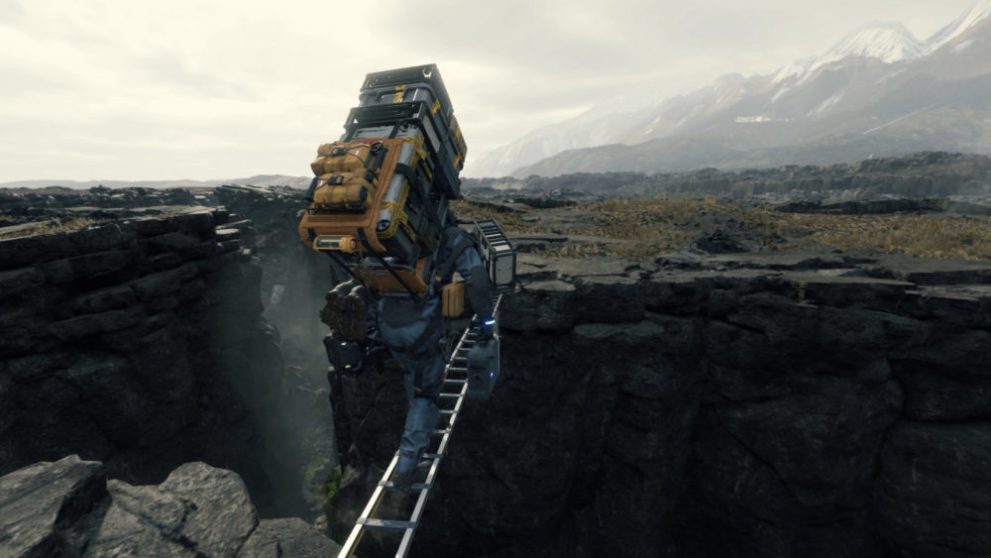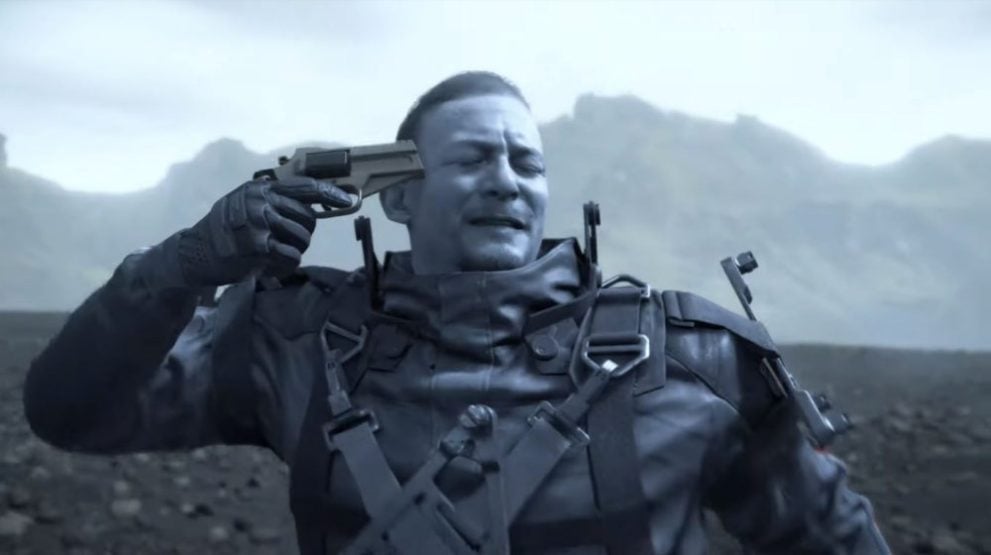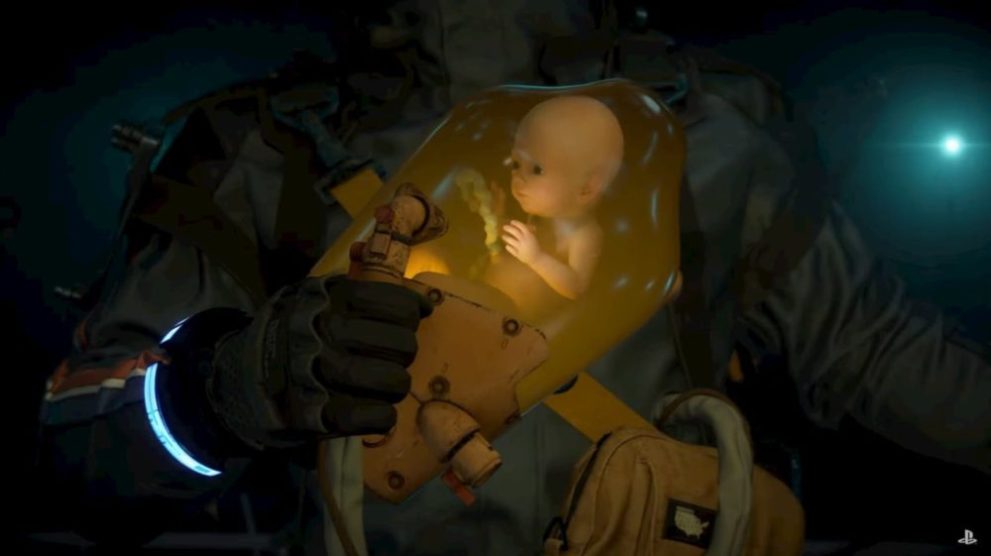It’s a Video Game

Ok, stick with me here because I know that sounds absurd, but if this latest trailer impressed anything upon us it’s that, yes, Death Stranding is indeed a conventional video game.
After years of mysterious teaser trailers which depicted a bizarre narrative and setting, Kojima’s typically cryptic teases and hints, and all the periodic Tweets from celebrities about how ground-breaking the game is, it turns out Death Stranding still has plenty of familiar mechanics.
We’ve seen traversal, survival elements, open world design, driving, stealth, and more that suggest this isn’t so much a reinvention of the wheel as it is another wonderfully strange –and, hopefully, brilliant– Kojima action game.
What were you expecting, you ask? Well, I’m not sure. Were you?
I suppose I was half expecting Death Stranding to tout some sort of “new way to play” video games –something totally removed from conventional design.
It’s not, as it turns out. Kojima’s latest game looks bonkers, and I’m sure it will bring new things to the table, but it’s still recognizable as a video game.
The Release Date

Another “duh” entry, you might say –obviously the release date is a hugely important takeaway from yesterday’s big reveal.
Of all Sony’s upcoming first-party exclusives, Death Stranding had previously seemed most likely a PS5 game, and yet it turns out it’s the furthest along.
It was a bit of a Mindfreak moment, which is fitting given the subject matter. But I actually think there’s something more to the promptness of Death Stranding’s arrival than just awe and excitement.
Three years ago, Kojima departed for his “world tech tour” after Sony revealed they’d signed the esteemed developer during its PSX keynote in December 2015.
Death Stranding would have then been in pre-development –at a conceptual phase. But even as recently as just over two and half years ago, Kojima hadn’t yet settled on an engine for his upcoming game.
That changed, of course, when he decided to opt for Guerrilla’s Decima engine, which hugely impressed him.
“We decided to make the rocket by reforming their engine. And by doing so it enables us to go to the mars but even to the jupiter,” Kojima said in a cryptic Tweet circa December 2016. He later clarified:
“We believe their engine will help make a better game, and a better future for our industry,” said Kojima. “Their engine is well suited to the tools and systems of an open-world game. This was a very important aspect for us.”
He wasn’t joking about Decima’s ability to rocket-boost the Death Stranding project; less than three years later the game will be done and dusted, and in the hands of consumers.
It’s a remarkably quick turn-around from a developer that’s typically taken a fairly long time to make games.
So what have learned from that?
Well, Death Stranding’s development seems to have gone swimmingly, and Kojima’s vision for the game, which appears gobbledygook to us mere mortals, is apparently a cohesive one that’s come together in record time. A good omen, I’d suggest.
Player Choice is a Core Philosophy

So I mentioned some of the familiar gameplay mechanics we saw during the trailer earlier, but I think it’s important to single out combat for a moment because it feeds into a wider point about the nature of one of Death Stranding’s core philosophies: player choice.
If you remember, we’d actually seen Sam’s futuristic assault rifle holstered on his back during last year’s E3 trailer, and so we knew there would be some form of gunplay in Death Stranding.
Yesterday’s trailer, though, was the first time we explicitly saw shooting, as well as some melee action, too.
It seems Death Stranding features shooting, punching, and whacking people over the head with a briefcase for those that want it. And while we’ve seen that the game features stealth action, Kojima’s also gone on to state it isn’t a stealth game.
So it’s neither one thing nor the other, but it offers both options equally.
Feeding into the notion of choice in a combat sense, we got to see a few different options in terms of traversal, too.
The various gadgets in Sam’s backpack –the enormous ladder, the rappel device, etc– seems to suggest you’ll be allowed to navigate the sandbox according to your own style and preference, too.
Finally, Some Grounding to the Story

Now, I’m not going to suggest for one moment that I have any idea what Death Stranding is about, or that what we were shown doesn’t prompt more questions than it does answers, but at least there’s actually some structure.
Following all the years of mysterious tone pieces and a seemingly nonsensical jumble of different ideas, we’re at least starting to see a grounding to the narrative.
Themes of climate change, political unrest, and social connectivity are starting to make some semblance of sense within the context of Death Stranding’s story.
We’re properly introduced to its characters for the first time, too, and it’s all starting to feel like a familiar Kojima affair suddenly –Metal Gear-esque, in fact, I dare to say.
The strange baby, called a Bridge-Baby, now seems slightly (and I do mean slightly) less bizarre, functioning as a sort of go-between device to “strand” between worlds, tieing into the theme of connectivity.
Time travel, too, clearly plays an important role. Or at least, shifting between different dimensions in some way? Sam’s seen negotiating what look like WW1 trenches, and the tank that rolls past is certainly from that era, as are the soldiers he shoots.
Quite how this all feeds into Sam’s wider mission of “saving” America, issued by a sickly President from her deathbed is anybody’s guess, but again, we’ve at least got some structure now.
And, seriously, who didn’t find all that compelling? Check your pulse, if you put your hand up…
Connectivity & Multiplayer

Kojima describes Death Stranding as a “brand new action game with the concept of connection (strand),” which he calls a “Social Strand System, or simply Strand Game.”
Now, I have to say, Mr. Kojima, that doesn’t really clear up the genre all that much, but it does at least help to explain what we can expect from the game’s multiplayer functionality.
Apparently, it’s to be asynchronous in nature, with players interacting with each other indirectly as the multiplayer elements of the game run in the background.
The notion of being “connected” is a tagline we keep hearing throughout the trailer, but what does that actually mean?
My colleague, Zhiqing Wan, has her own theory, and she’s written a brilliant piece that I encourage everyone to go and read. In brief, she reminds us Death Stranding isn’t the first game that Kojima has tied story components to multiplayer functionality.
Metal Gear Solid V, of course, had a hidden cutscene that only triggered if everyone in a server opted not to research nuclear weapons.
It wasn’t something that could be triggered by a singleplayer, and it was also a highly unlikely scenario anyway given that most players immediately set about attempting to develop nuclear weapons.
The idea, of course, is to bring players together in a community event to achieve something they’d never typically seek to do. Perhaps Death Stranding’s multiplayer will attempt something similar?
